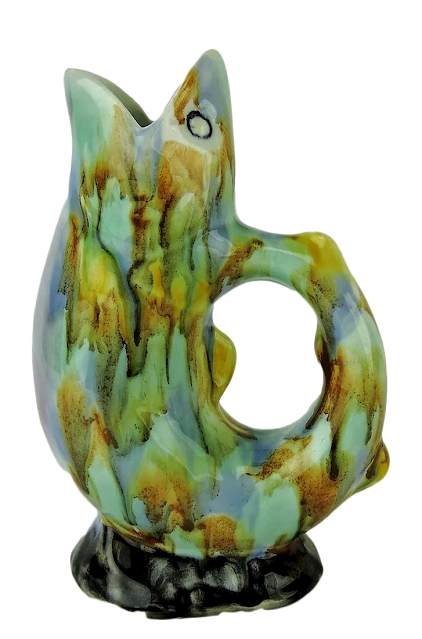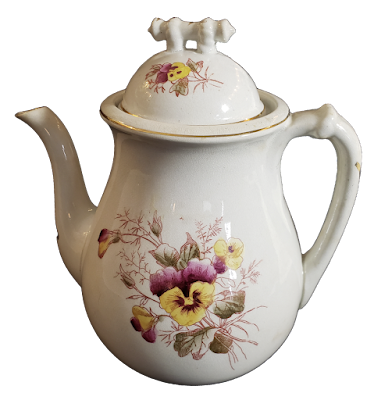Like many 19th century American potters, George Morley began life in Staffordshire, Great Britain. Born in 1829 to a working class family in Stoke-on-Trent, his father was a kiln fireman in the potteries. By the age of ten he too began working in the potteries to help support the family. After years of learning his craft, he emigrated to the United States at the age of 20 to make his fortune in the growing American pottery industry. Joining the two brothers who had preceded him, the three established a small pottery in Upper Alton, Illinois. By 1851 the brothers had established some success creating utility ware for everyday use. When his brothers left Illinois for work in Ohio, he remained in Upper Alton and partnered with established potter George Swettenham to form Swettenham & Morley which specialized in utilitarian ware. A short-lived venture, he soon also left Illinois to join his brothers in East Liverpool, Ohio.
After working at several small potteries in the area, in 1858 he partnered with his brother as well as several other local British potters to form Morley, Godwin & Flentke at the Salamander Pottery.
They specialized in creating Rockingham, granite and other utilitarian ware as well as some specialty pickle dishes, decorative pitchers and white Queensware. Throughout the 1860s and 70s, the profitable venture expanded its footprint and began exporting ceramics to other areas around the northeast U.S.
Despite this success, the ambitious Morley left the pottery in 1878 to form Morley & Company at the Pioneer Pottery in Wellsville, Ohio. There he produced Rockingham, yellowware and white granite.
In 1881 Morley & Co. jumped on the majolica bandwagon which was beginning to establish popularity in the United States following the 1876 Philadelphia Exhibition. Unlike other majolica made up to that time in England and the U.S., Morley did not use an earthenware body as the base to his majolica. Instead he chose the ironstone and granite bodies with which he had significant experience. Like many other small potters he began by making copies of successful British wares before creating original designs of his own. The majolica was marketed as American Majolica.
In 1884, Morley left the Pioneer Pottery and moved his operation to East Liverpool where he purchased the West, Hardwick and Company plant, renaming it the Lincoln Pottery after his son Lincoln Morley. He expanded his line of majolica using the same molds utilized in Wellsville and marketed it under the name of George Morley’s Majolica. The company developed a good working relationship with David Smith of Griffen, Smith & Co., exchanging glaze and body formulas with the Phoenixville Etruscan Works,. Utilizing marketing techniques advocated by the Pennsylvania potter, Morley expanded his sales both east and west of East Liverpool, changing the company name to Morley & Son after his son joined the firm.
After two years of growth, the success of Morley & Son began to stagnate. Despite purchasing molds from the folded Etruscan Works to rejuvenate their line, the company fortunes were inextricably tied to the diminishing popularity of majolica and continued to decline for several years before finally declaring bankruptcy in 1891. Thus came the end to the brief life of Morley majolica.
George Morley himself was also driven into personal bankruptcy by the failure of the pottery. After satisfying creditors of Morley & Son, he left business behind him and entered politics, a field in which he had dabbled for years as a potter. He served as mayor of New Liverpool for one term after the conclusion of which he became a judge, a position he held until his death at the age of 67.
The Morley plant was sold to Robert and John Hall who changed the name of the Lincoln pottery to the East Liverpool Company Pottery. That operated until 1903 at which time it was transferred to a new consortium of partners who opened the Hall China Company in 1905.
As a result of its unique body, Morley Majolica has a distinctive look all its own. The application and choice of glazes is also unique with Morley favoring gaudy, loose color placement and random daubing techniques instead of the detailed realistic coloring more commonly seen in majolica wares. Morley’s original designs are rustic, adding a charming naiveté to the overall look of the ware.


























No comments:
Post a Comment